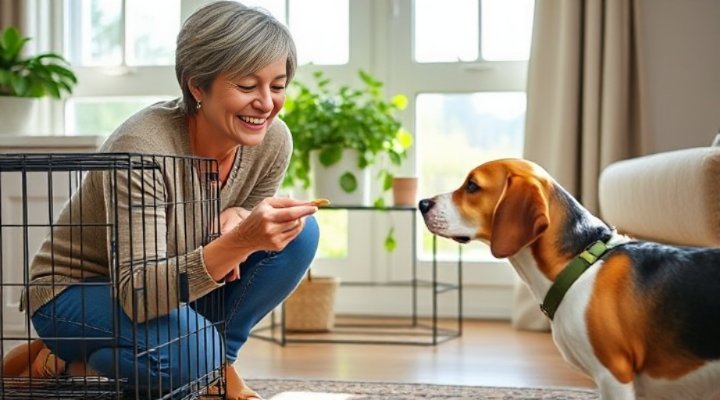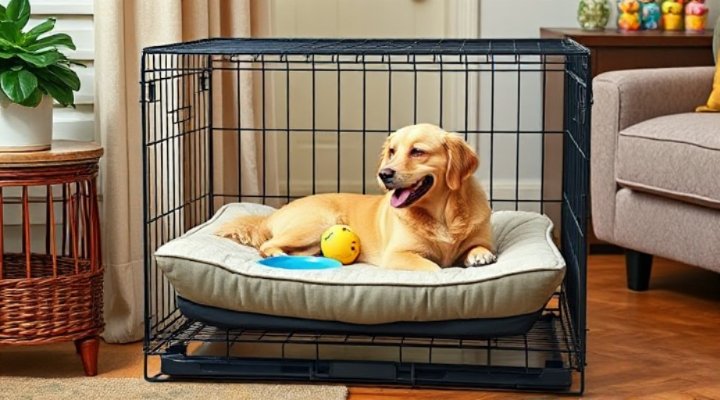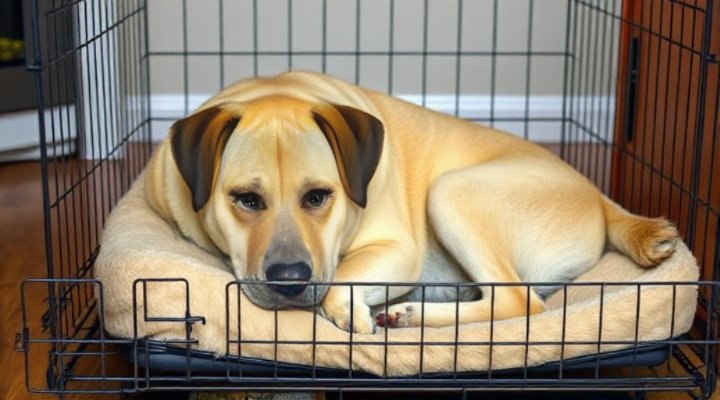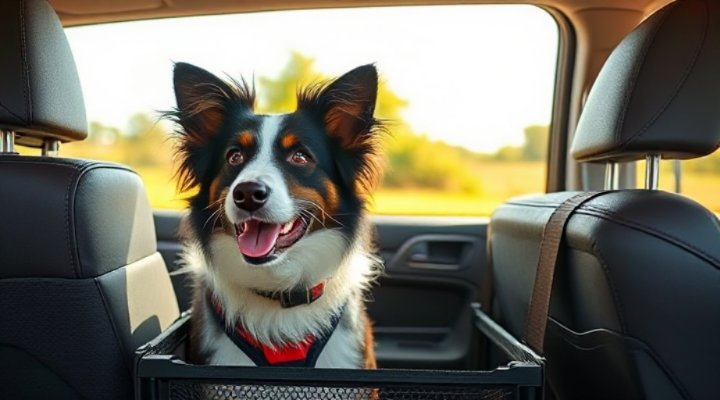Crate training an older dog might seem challenging at first, but with patience and the right approach, it can become a positive experience for your senior companion. Unlike puppies, older dogs may have established habits and preferences, which means we need to adapt our training methods accordingly.

Why Crate Training Benefits Older Dogs
Many people assume crate training is only for puppies, but senior dogs can benefit tremendously too. A crate provides a safe haven for older dogs, especially those with anxiety or mobility issues. According to the American Veterinary Medical Association, crates can help manage canine cognitive dysfunction in aging pets.
For travel or vet visits, a crate-trained dog experiences less stress. I remember how my 10-year-old Labrador, Max, initially resisted his crate but later sought it out as his ‘safe space’ during thunderstorms.

Choosing the Right Crate for Your Senior Dog
When selecting a crate for an older dog, consider these factors:
- Size: Big enough to stand, turn around, and lie down comfortably
- Type: Wire crates offer visibility while soft-sided crates are lighter for travel
- Comfort: Add orthopedic bedding to support aging joints
Our guide on choosing the perfect pet crate offers more detailed recommendations.

Step-by-Step Crate Training Process
1. Introduction Phase
Start by placing the crate in a quiet area with the door open. Sprinkle treats near it, gradually moving them inside. Never force your dog – let them explore at their own pace.
2. Positive Association Building
Feed meals near the crate, then inside it. Use special treats only given in the crate. This creates positive associations, similar to the techniques we recommend in our positive reinforcement training guide.
3. Gradual Confinement
Begin closing the door for short periods while you’re present. Gradually increase duration, always watching for signs of stress.

Addressing Common Challenges
Older dogs may present unique challenges:
- Housebreaking issues: Consult our house training guide if accidents occur
- Separation anxiety: The ASPCA recommends gradual departures
- Physical limitations: Consider ramps for dogs with arthritis
Remember, progress may be slower with senior dogs, but consistency is key. My neighbor’s 12-year-old Dachshund took six weeks to become comfortable with her crate, but now happily naps there daily.

Making the Crate a Happy Place
To maintain your dog’s positive association with their crate:
- Rotate special toys kept only in the crate
- Use calming pheromone sprays if needed
- Keep the crate in a social area, not isolated
For dogs needing extra encouragement, our crate training tips (though written for puppies) contain adaptable advice.
Final Thoughts
Crate training an older dog requires patience and understanding of your pet’s unique needs. The process might take longer than with a puppy, but the benefits – a safe space for your senior companion, easier vet visits, and stress-free travel – make it worthwhile. Always consult your veterinarian if you have concerns about your older dog’s health or behavior during crate training.
Related Keywords: senior dog crate training, how to crate train an adult dog, best crate training methods for older dogs, making crates comfortable for senior dogs, travel crate training for adult dogs

